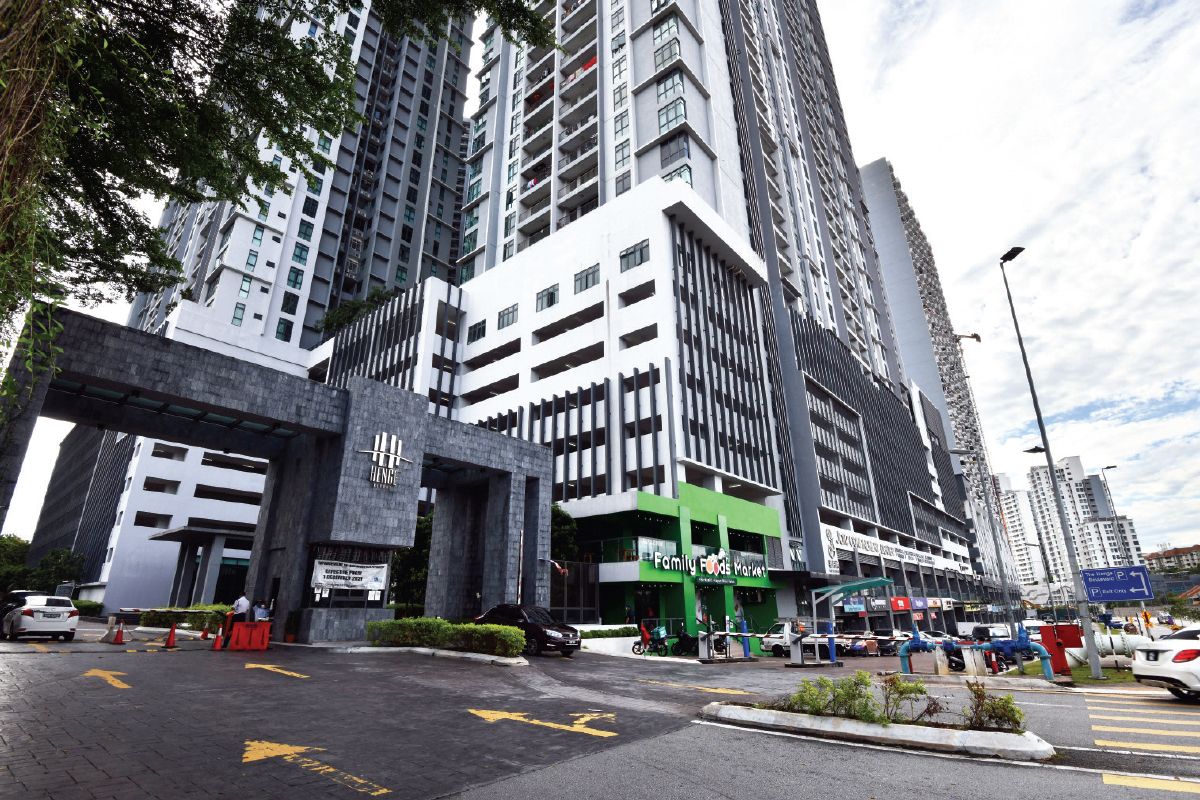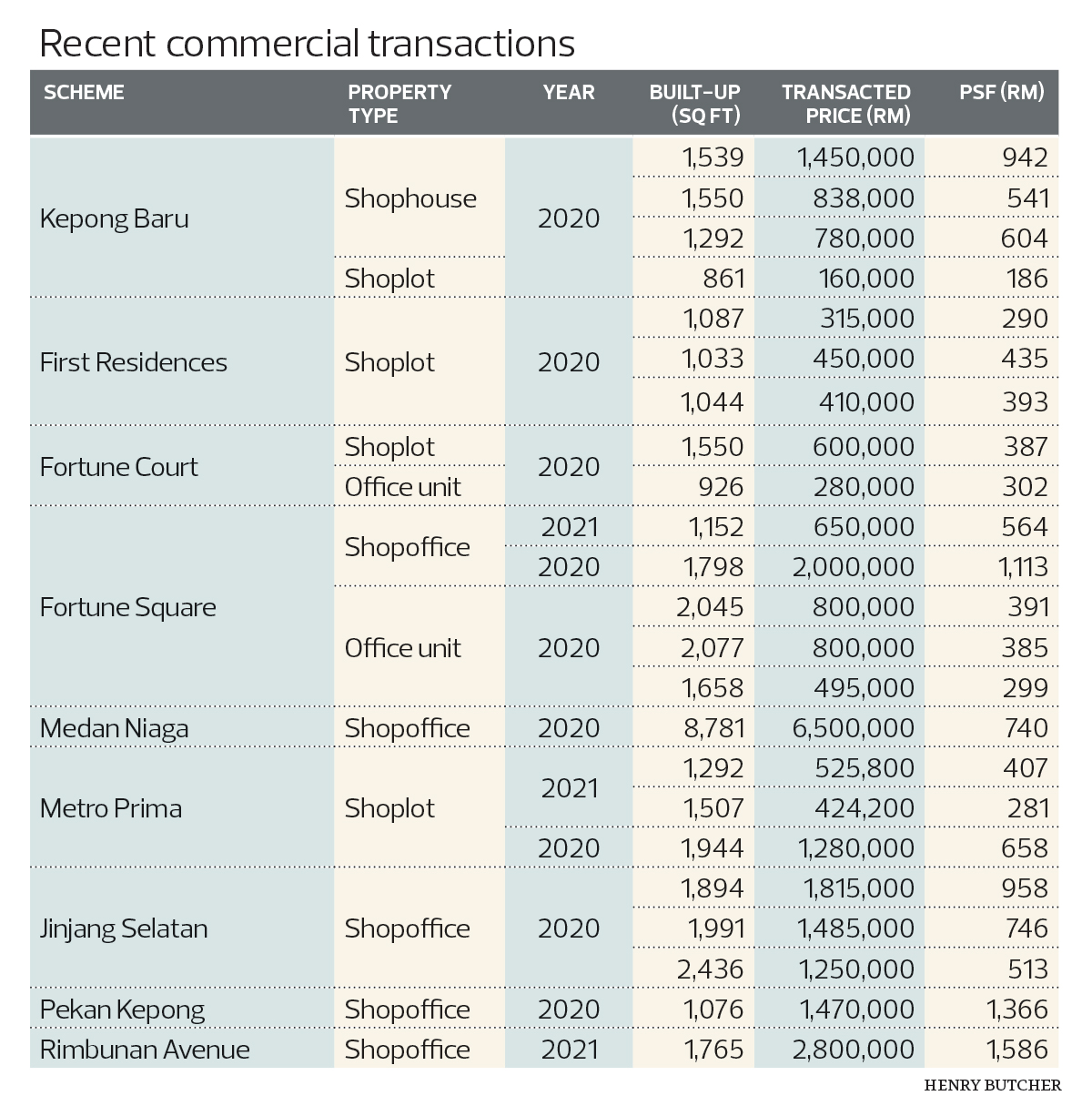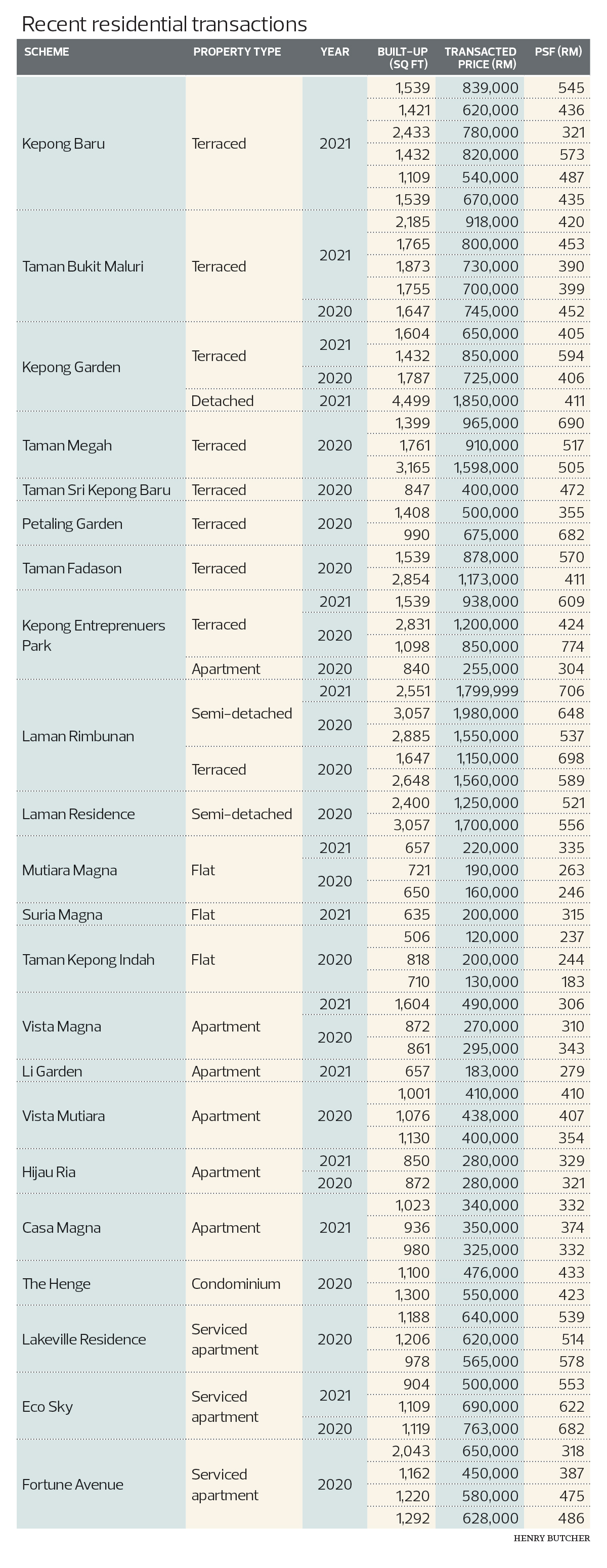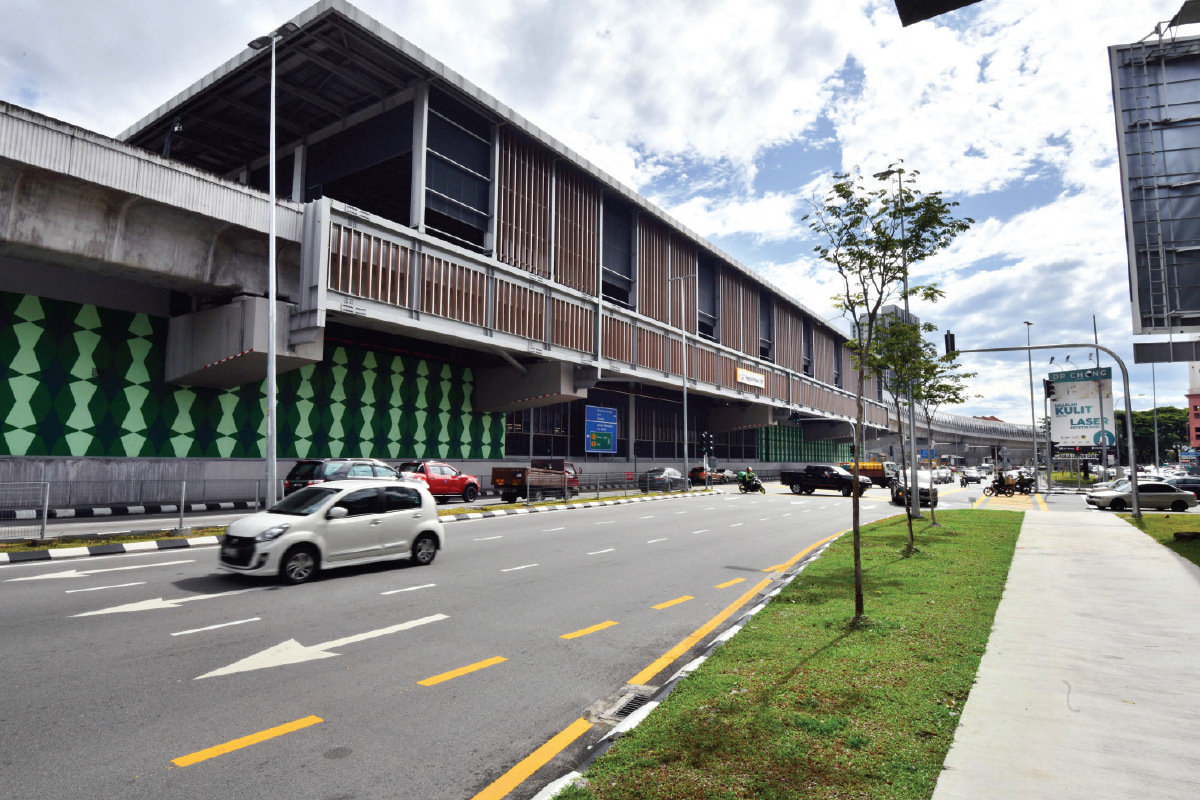
This article first appeared in City & Country, The Edge Malaysia Weekly on April 11, 2022 - April 17, 2022
Kepong, which sits on the border of Kuala Lumpur and Selangor, is an older and more mature neighbourhood in KL. It is densely populated and offers a vibrant mix of residential and commercial developments.
According to Savills (M) Sdn Bhd managing director Datuk Paul Khong, it covers an area of about 4,000 acres and has a population of 150,000 to 200,000.
As Kepong is a relatively big township, for this article, we focus on northern Kepong, which is bounded by the Middle Ring Road 2 (MRR2),
Duta-Ulu Kelang Expressway (DUKE), Selayang-Kepong Highway and Jalan Kuching, and its border with Segambut.
From tin mine to popular neighbourhood
Henry Butcher (M) Sdn Bhd chief operating officer Tang Chee Meng says Kepong started off as a tin mining area in the 1800s. Some parts were later turned into rubber plantations during the rubber boom. At the height of the tin mining era, many migrants from China were brought in to work in the mines and till today, Kepong remains a predominantly Chinese neighbourhood.
“During the British Malaya era in the 1950s, Chinese new villages were set up by the British to curb the influence of the communists, and they were established in Kepong too. After independence, the area grew and many new housing schemes were developed to cater for the growing population,” relates Tang.
Khong notes that the northern part of Kepong will see massive changes over the next decade with the development of new projects by the likes of UEM Sunrise Bhd and Mah Sing Group Bhd. Some are large-scale master-planned products that will change the skyline and enhance the cityscape of the area.
According to Tang, the demand for properties in the area has been encouraging and comparable to that in neighbouring areas such as Sentul, Bandar Sri Damansara, Batu Caves and Taman Wahyu.
Data from Henry Butcher shows that the terraced houses in Kepong Baru, Taman Bukit Maluri, Kepong Garden, Taman Megah, Taman Sri Kepong Baru, Petaling Garden, Taman Fadason, Kepong Entrepreneurs Park and Laman Rimbunan, with built-ups of 847 to 3,165 sq ft, were sold for RM400,000 to RM1.59 million in 2020 and 2021.
During the same period, the semi-detached and detached houses in Laman Residence, Laman Rimbunan and Kepong Garden with built-ups of 2,400 to 4,499 sq ft were transacted at RM1.25 million to RM1.98 million. Rents ranged from RM1,500 to RM3,800 a month, yielding 2.1% to 3.7% a year.
“As for the flats, apartments, condominiums and serviced apartments, they have built-ups of 506 to 2,043 sq ft and were transacted at between RM120,000 and RM763,000 in 2020 and 2021. These units can fetch a monthly rent of RM700 to RM2,200, which translates into a gross return of 3% to 5.6% a year,” says Tang.
As for the commercial segment, he notes that the shophouses, shopoffices, shoplots and office units in Kepong Baru, First Residences, Fortune Court, Fortune Square, Metro Prima, Jinjang Selatan,
Pekan Kepong and Rimbunan Avenue with built-ups of 861 to 2,077 sq ft were transacted at RM160,000 to RM2.8 million in 2020 and 2021, while an 8,781 sq ft shopoffice in Medan Niaga was sold for RM6.5 million in 2020. Monthly rents range from RM1,100 to RM6,200, giving yields of 2.7% to 4.7% a year.
This, coupled with the completion of DUKE 2, which will reduce travelling time to the city centre, and changes in the development landscape owing to the sizeable projects, will make Kepong more vibrant and improve demand for new real estate once the pandemic is over, he predicts.
The upcoming Putrajaya Line (MRT2) will be a big game changer as it is expected to enhance accessibility in the area, says Khong. “It will have five stations — Metro Prima, Kepong Baru, Sri Damansara Timur (formerly Kepong Sentral), Jinjang and Sri Delima — located along the main thoroughfare of Jalan Kepong, which connects the Jalan Kuching and Jalan Ipoh roundabout in the east to the Selayang-Kepong Highway in the west. These stations are due to be operational in the second quarter of this year.”
Developments in the area
According to Khong, some of the newer developments in the northern part of Kepong are UEM Sunrise’s Kiara Bay, and the recently completed The Henge by Aset Kayamas Sdn Bhd and Mizumi Residences by Wawasan Metro Bina Sdn Bhd.
“The local pent-up demand is strong and the earlier market peaks were core reasons for the excellent sales rates for The Henge and Mizumi Residences. Not many new products were offered for sale in the local market and these projects stepped in to fill the vacuum,” he says, adding that Kiara Bay has a competitive edge because it is by a reputable developer, and has comprehensive planning, accessibility and proximity to various amenities.
Tang says recent residential projects in the area are well planned and of better quality, and are affordably priced compared with other established areas like Mont’Kiara and Desa ParkCity. “It also enjoys easy accessibility to Kuala Lumpur, Petaling Jaya and other parts of the Klang Valley via roads and highways such as Jalan Kuching, Jalan Kepong, MRR2, DUKE, the North-South Expressway, Selayang-Kepong Highway and Damansara-Puchong Expressway.”
Nearby amenities include shopping malls such as Aeon BiG, AEON Mall Metro Prima and Brem Mall; educational institutions such as SJK(C) Kepong 1, SMK Jinjang and SMK Kepong Baru; recreational parks and nature reserves such as Kepong Metropolitan Park, Forest Research Institute of Malaysia and Bukit Lagong Forest Reserve; wet markets such as the Kepong Baru morning market; and healthcare facilities such as Hospital Selayang and Klinik Kesihatan Jinjang.
Projects completed in 2020 include Mah Sing’s last tower at Lakeville Residence, Phase 1 of Residensi Seri Wahyu, Aset Kayamas’ The Henge and Block B of The Herz, Asian Pac Holdings Bhd’s Fortune Centra and TSI Domain Sdn Bhd’s Three 33 Residences.
Some notable ongoing and upcoming projects include Kiara Bay by UEM Sunrise in a joint venture with Melati Ehsan Group, M Luna by Mah Sing, and Lake City by Country Garden Holdings Co Ltd and ParkCity Holdings.
Kiara Bay is a 73-acre integrated township comprising residential, commercial and retail components, and located adjacent to Kepong Metropolitan Park. Its first phase, Residensi AVA, was launched in November 2019. The project comprises 870 residential units in two 41-storey towers. Tang says that the units with built-ups of 813 to 1,285 sq ft are going for RM560,000 to RM980,000, and are slated for completion in 2025.
The 5.47-acre M Luna, also located next to Kepong Metropolitan Park, will comprise 1,672 serviced apartments in two 57-storey towers. Due for completion in 2024, the units with built-ups of 701 to 1,000 sq ft are priced from RM385,000.
Meanwhile, the 80-acre Lake City — located near the Sri Delima MRT station and Taman Wahyu KTM station — will comprise residential, commercial and retail components. Tang says that its first phase, Aradia Residence @ Lake City, consists of three 43-storey towers with a total of 1,003 serviced apartments. Priced from RM360,000, the units with built-ups of 567 to 1,687 sq ft are expected to be completed next year.
Both Tang and Khong are of the opinion that these new developments have enhanced the built environment and upgraded the image and appeal of the area, moving towards high-rise and high-density strata formats.
“With these developments coming onstream in the future, there will certainly be added pressure on the existing road networks and this will lead to a worsening of traffic congestion in the area. As such, some of the roads should be widened and traffic flow at busy road intersections/junctions improved to clear bottlenecks and smoothen traffic flow,” Tang suggests.
On a positive note, Khong points out that the completion of new infrastructure such as DUKE 3 and MRT2 will help to ease the situation and spur more development and redevelopment in the neighbourhood.
Promising outlook
Tang says that the quality of projects launched in Kepong in recent years has improved in terms of concept, design, landscaping, specifications and price point as the developers have made an attempt to upgrade the built environment and overall image and positioning of the area. With these developments, the outlook for the property market in Kepong appears promising in the mid to long term.
Khong opines that newer developments in the vicinity of Kepong Metropolitan Park such as Kiara Bay will continue to improve the landscape and image of the Kepong area over the next decade. Prior to this, projects in the township were generally sporadic and haphazardly developed as smallish, standalone schemes. They were undertaken by many small local developers without co-ordination, which did not have a positive impact on the landscape of neighbourhood.
The upcoming MRT2 will also create more buzz in the neighbourhood. Khong foresees improvements as Kepong becomes more strategically connected to major new job centres like the Tun Razak Exchange, KL city centre and beyond. This will contribute to more in-migration and indirectly rejuvenate the entire area in the long run from a new redevelopment angle.
“Kepong lies at the fringe of the city centre and is strategically located within the city limits. With substantial improvements from the infrastructure angle, much of the older and blighted areas in the vicinity will be due for some ‘highest and best use’ redevelopment,” adds Khong.
Save by subscribing to us for your print and/or digital copy.
P/S: The Edge is also available on Apple's App Store and Android's Google Play.
- Fire incident in Putra Heights not related to Gas Malaysia facilities, company says
- Sumbangan Asas Rahmah credited on April 1, recipients describe it as Syawal windfall
- Singapore’s Capital World says MACC froze its unit CCP’s bank accounts to facilitate ongoing investigations
- Gas pipeline blaze victims recount earthquake-like tremors
- Directors cannot be automatically retired without an AGM, Court of Appeal rules
- Factories around the world brace for Trump tariffs
- Gas pipeline blaze: Risk of secondary explosion very low, says Fire Dept chief
- Wall Street falls as tariff fears mount
- Malaysia’s Smart team recovers four bodies from Myanmar earthquake rubble
- Selangor MB: Preliminary report on Putra Heights fire expected to be ready in 72 hours






